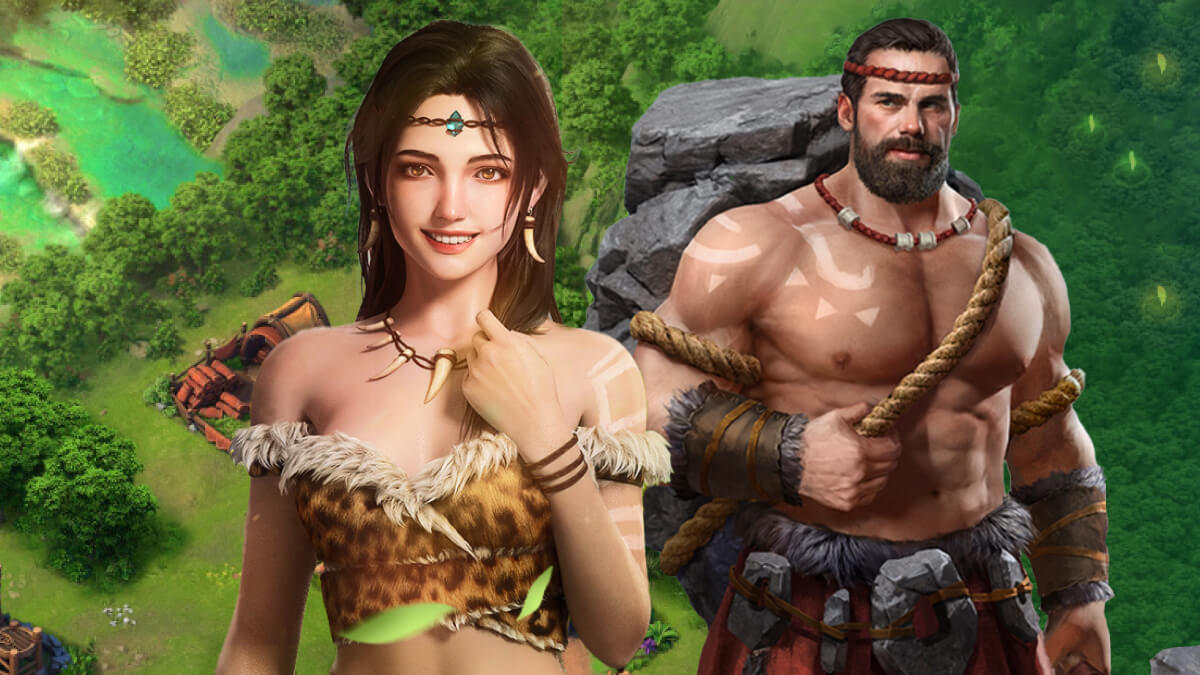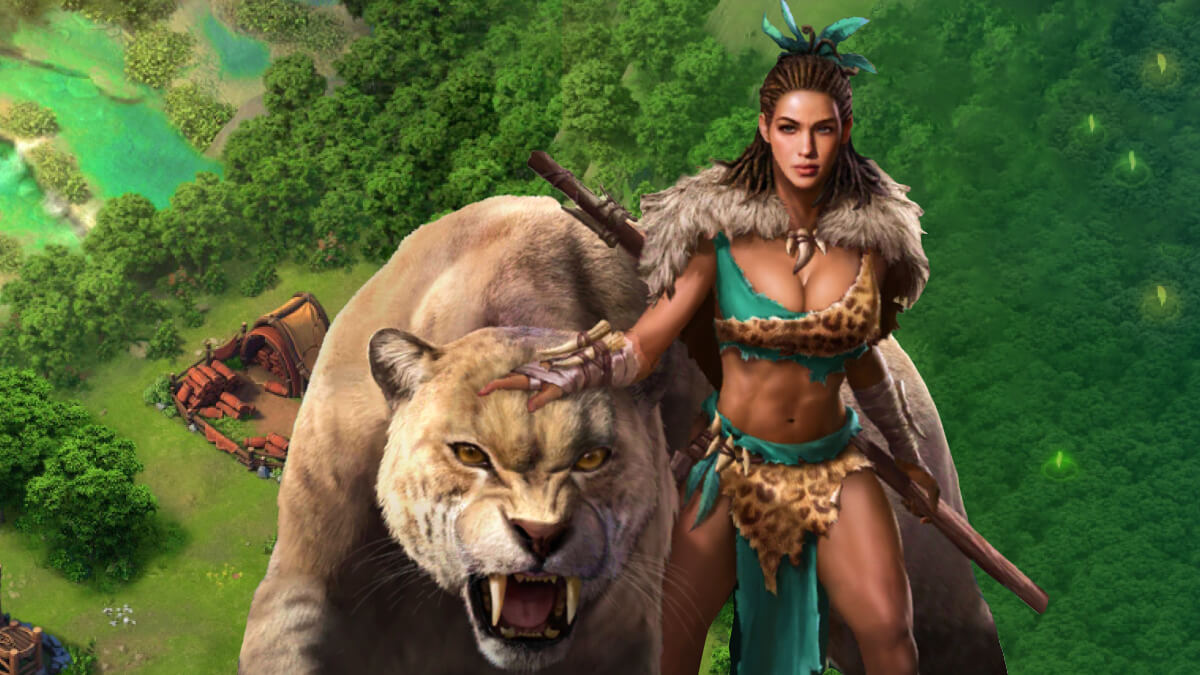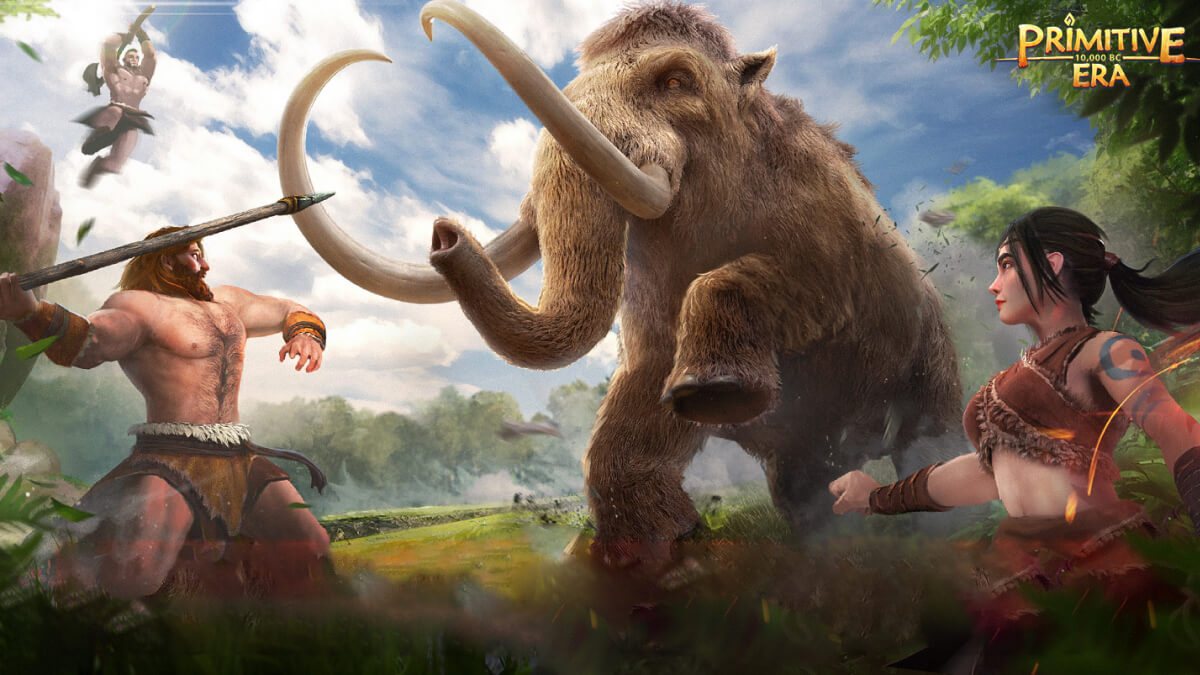Primitive Era: 10000 BC is a strategy mobile game that takes you back to the prehistoric age and allows you to explore the secrets of its ancient civilizations. In this game, you can unlock civilizations such as Gendaya, Mesopotamia, and Atlantis, build your territory from scratch, improve productivity, and create powerful squads of different heroes, warriors, and beasts.
But as a new player, you may wonder how to excel in this game. To help you get started the right way, we’ve put together a comprehensive beginner’s guide for the Primitive Era: 10000 BC. And if you want to learn even more about this game, we’ve prepared a list of 15 useful tips and tricks for this prehistorical strategy game.
Getting started
The story begins with a colossal tragedy, a volcanic eruption that destroys the caves of a mighty tribe’s inhabitants, forcing them to migrate and find another place to call home. Your main character in the game is Meyer, the niece of Rud, one of the most trusted leaders of your village.
She’s brave, determined, and adventurous and it will take you through various levels and locations as she discovers lost artifacts and enemy tribes, and works towards establishing a thriving civilization.
As you progress, you can expand the territory of your village and assemble powerful armies. You can then use them to defeat various prehistoric creatures, Barbarians or fight other tribes and dominate the land. Additionally, you can join other tribes of players from all over the world and collaborate with them to tame wild beasts, and take part in events and rallies together.
Learning the interface
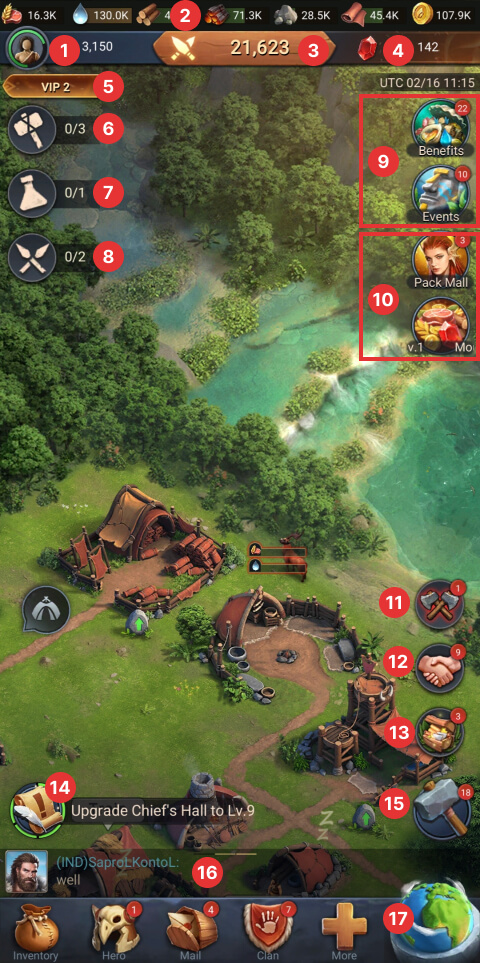
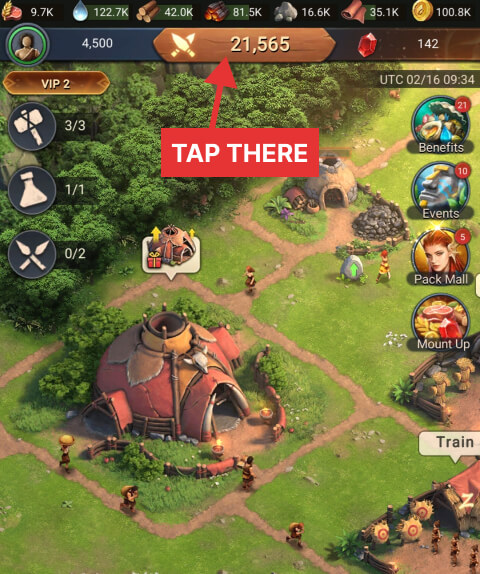
Understanding the interface is a crucial step in mastering this game. The game’s UI consists of various different sections and menus, which I will explain in brief:
- Villager Status – The Villager Status shows you the maximum and current number of your village habitants. This number is directly influenced by the Fodd and Water supply in the Bonfire Plaza structure. An empty Bonfire Plaza causes your villagers’ number to drop and so does the Gold production.
- Resource bar – The number of resources ready to be used (more details below).
- Power Score – This is a score that will track your progress in the game. It is calculated based on the amount and level of structures in your village, as well as the number and tier of troops, how many heroes you have recruited, and how far you have upgraded them.
- Ruby Amount – The total amount of Rubies you have ready for use (inventory token rubies are not counted)
- VIP System – This system allows you to get rewards and bonuses based on your playtime. The higher the VIP level, the better your daily rewards will be.
- Laborer List – The list of the total number of builders and building queues.
- Research – This will take you to the Research menu where you can research new techs. It can also be accessed by tapping the Foreteller’s Dome structure.
- March Queues List – The March Queues page where you can create and customize your troop squads.
- Benefits and Events – Both sections will offer you a series of missions and challenges that you can complete and gain amazing rewards.
- Premium Offers – Premium packages that you can purchase with real money.
- Clan War – This icon appears whenever a member of your Clan starts a rally. You can tap it and join.
- Clan Help – This will appear whenever one of your allies needs help with a research or building project. You should tap it whenever you see it as it will decrease their duration. Other members can help you as well.
- Clan Gift – The reward you can claim for being an active Clan member (tech donations, being online, and helping other allies).
- Missions – The missions you can complete and claim the rewards.
- Building Menu – This will display the entire list of structures you can build in your village.
- Chat – This section lets you communicate with other players, either globally, or only with your Clan members.
- Main Menu bar – The bottom bar displays the most important sections of the game. On the right side, you have the globe icon through which you can access the World Map.
Setting Up Your Account
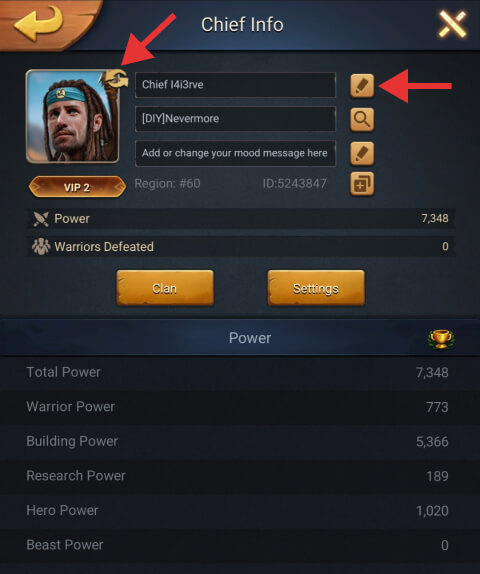
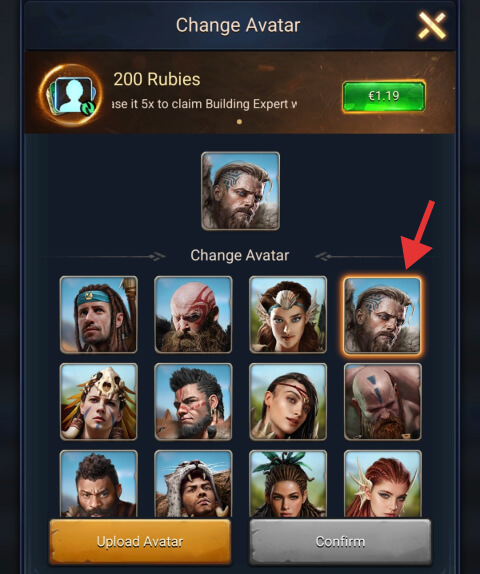
Once you finished the tutorial and advanced a few levels, one of the first things you should do is rename your profile and choose an avatar. This will make you more easily recognizable in the game and help your friends, allies, and opponents remember you.
The first rename is free, but any following renames will cost you 2,000 Rubies. Fortunately, the avatar is free as long as you choose any of the in-game avatars. To upload your own avatar, you need to buy a premium pack.
Both, the rename and avatar fields, can be found under the Chief Info section, which can be accessed by tapping the crossing swords area at the top of the screen (see the above image).
Using the Inventory and Resources
The entire game revolves around the use of resources and inventory. You will need to gather and collect as many resources as you can to build structures and units.
As you complete missions, gather resources, or defeat creatures, the majority of the resources will be directly added to your storage and displayed at the top of your screen (see the resource bar below). These resources can be plundered, so you should make they are always below your protection level.
You will also receive resource tokens, which will be directly added to your inventory and have no limit on how many items you can have. They cannot be plundered by enemies, but you should use them only when necessary.
In Primitive Era: 10000 BC, there are 6 Primary resources and 2 Advanced, which I will describe in more detail below.
Primary resources
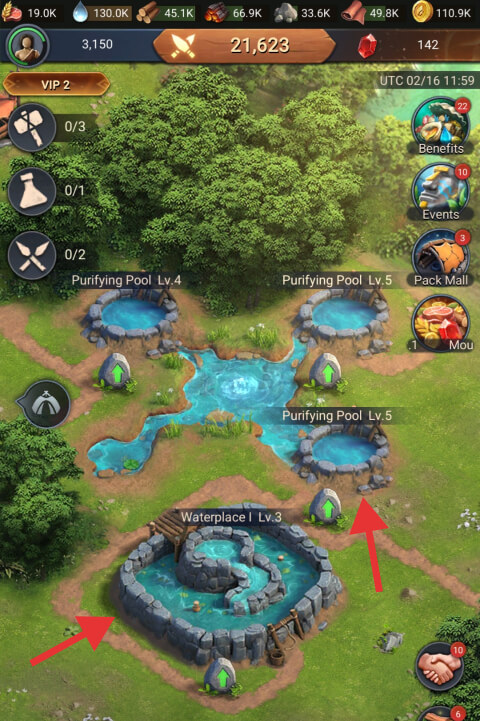
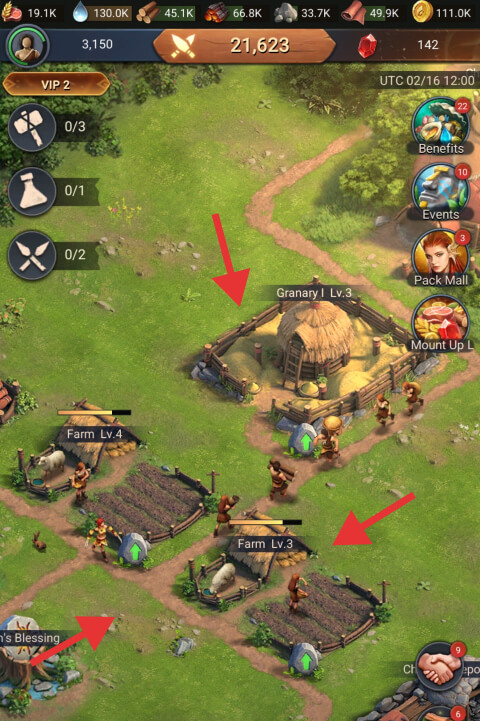
- Food – This primary resource is used for keeping your population fed and happy. It is also required for training infantry troops and upgrading certain buildings in your village.
It can be obtained by building Farmlands near fertile soil, trading with the Travelling Merchant, claiming rewards from Daily and Main Missions, as well as participating in events. Wood can also be gathered from Bramble resource spots on the world map. - Water – Same as Food, Water is needed to maintain the population of your village. It needs to be constantly delivered to Bonfire Plaza to ensure steady resource productivity.
You can obtain Water by building Purifying Pools in the village, and all the previous methods mentioned above. However, it cannot be gathered/collected from resource points. - Wood – It is mainly used to produce Charcoal, upgrade buildings, research techs, and train Cavalry units. You can obtain it by building and upgrading Logging Shed structures in your Village, all previous methods mentioned above. It can also be gathered from Tree Farms resource spots.
- Charcoal – This is an essential resource used to upgrade buildings and maintain the production efficiency of your resource structures in the village. It can be produced by Charcoal Kiln buildings, which require a constant Wood supply.
- Stone – This type of resource is necessary for structure upgrades, tech research, and training warriors. It can be produced in your village by building Stoneworks near a rock hill, but also from Sandy Riverbank resource points on the map.
- Pelts – Lastly, Pelts are used for researching techs and upgrading structures. You can produce it by building Hunter Shelters in the village, as well as by gathering from Beast’s Den resource points or hunting Giant Warthogs on the map.
Advanced resources
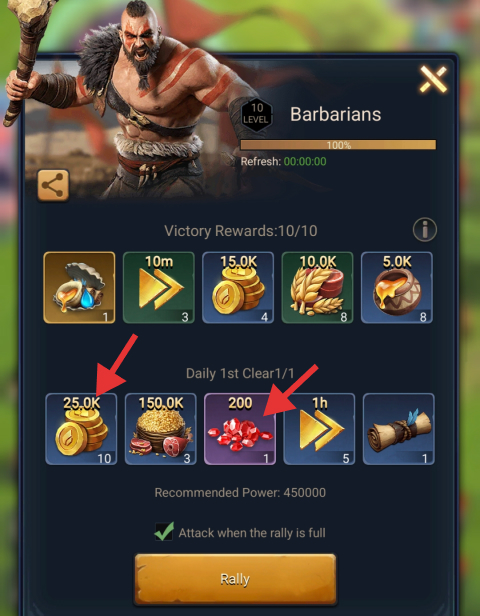
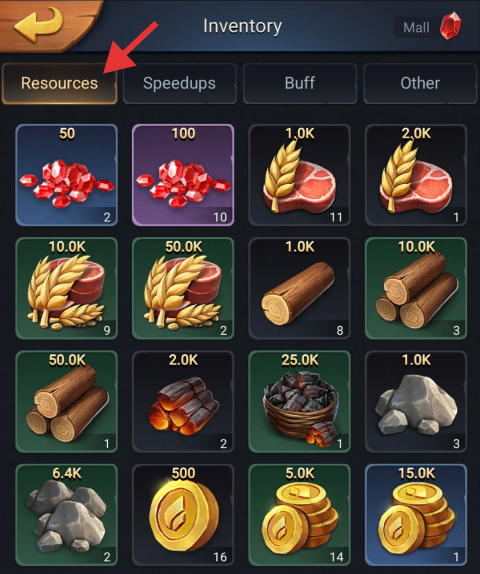
- Gold – Gold is an advanced resource that is required for tech research and structure upgrades. It can be produced by Gold Mines in your village and can also be obtained from mission rewards, events, and defeating Gold Thief creatures and Barbarians.
- Rubies – This precious resource can be used to speed up production queues or instantly research technologies, train troops, or buy almost any item or resource from the Mall. You can get it from event rewards, missions, defeating Barbarians in rallies, or purchasing premium packs (which are literally placed everywhere in the game).
Exploring the world of Primitive Era:10000 BC
There’s an entire world to explore in the game, not just inside your village. You can start exploring it by tapping on the world map globe button in the bottom-right corner of your screen. Here, you will be able to gather more resources, attack other players’ villages, or defeat creatures either solo or in rally attacks with your Clan members.
Wild Creatures

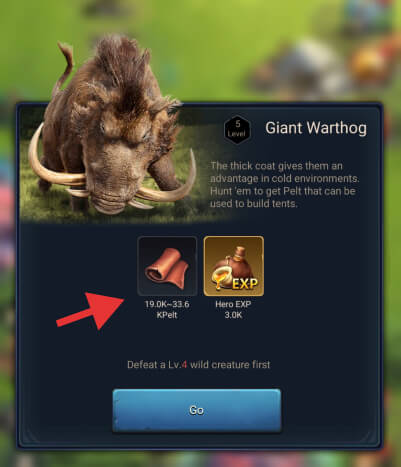
As you’ll notice on the map, there are a few different creatures you can hunt. Each creature offers specific rewards and the amount is determined by the creature’s level, which can range from 1 to 15. These creatures are as follow:
- Megaloceros – Giant dires that drop Food tokens
- Dire Wolf – Gigantic wolves that drop Wood
- Carved Tooth – A creepy prehistoric creature offering Stone
- Giant Warthog – This creature drops Pelt
- Gold Thief – This bird-like dinosaur drops Gold
Resource Points
Besides the resource production building in your village, there are also various resource points on the map, that you can use to send your March Queues to gather resources from them. Here’s a list of all the resource points available to gather from:
- Bramble (Food)
- Tree Farm (Wood)
- Sandy Riverbank (Stone)
- Beasts’s Den (Pelt)
- Ruby mines (Ruby)
The number of resources you can gather from these points is highly dependent on how advanced your Maech Queues are. It depends as well on the level of the Resource Point, which can range from 1 to 10. The closer your village is to the center of the map, the more likely you are to find higher-level Resource Points.
The Search function
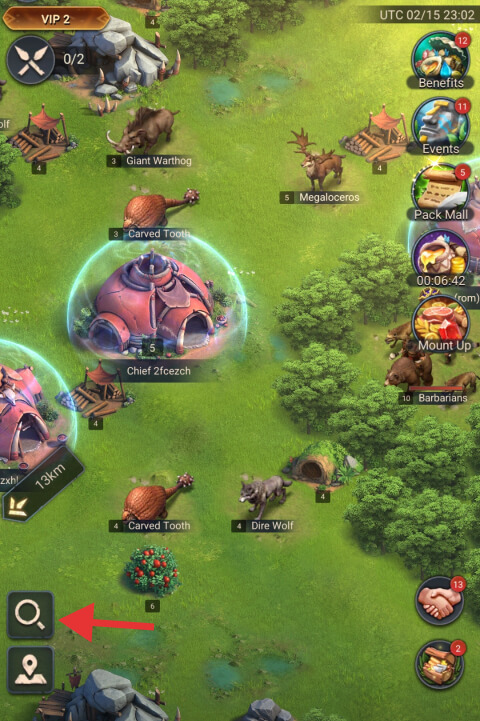
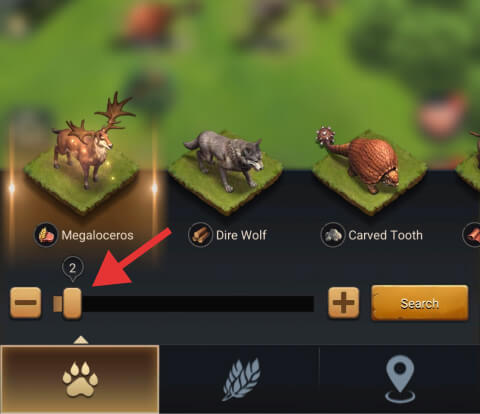
The quickest way to search for something on the world map is to use the search function by clicking the search icon on the left side of the screen. Once that window pops up, you can search for resource spots or creatures, and the desired level.
Choosing a Custom
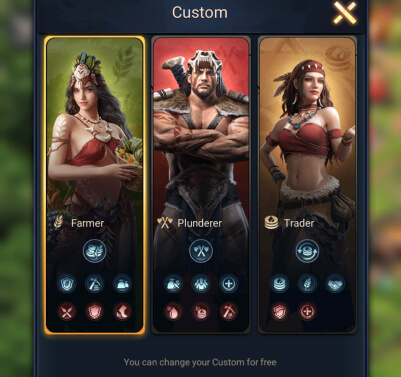
Customs are basically classes that you are probably already familiar with from other similar strategy games such as Rise of Castles: Ice and Fire. They serve to define the type of gameplay you prefer, and you get access to them at Chief’s Hall level 7.
In this game, you have 3 Customs: Farmer, Plunderer, and Trader, and you need to choose one of them. The names are pretty much self-explanatory, so it’s up to you which one you choose.
You will also receive a free choice every 3 days after that, and you can use them to change the Custom of your village. However, these free custom choices do not stack and expire in 2 days upon being granted, if not used.
Expanding your village
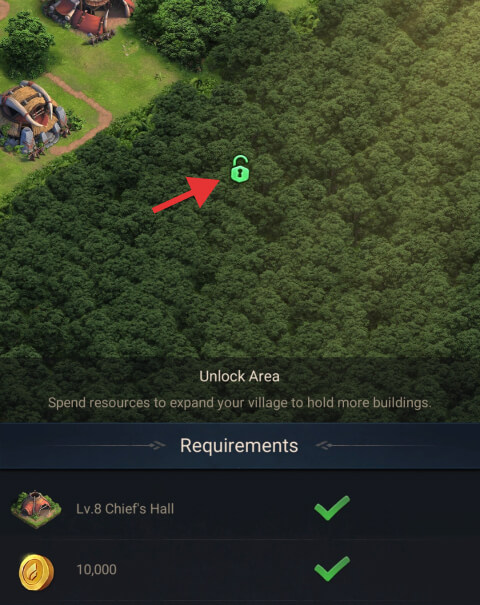
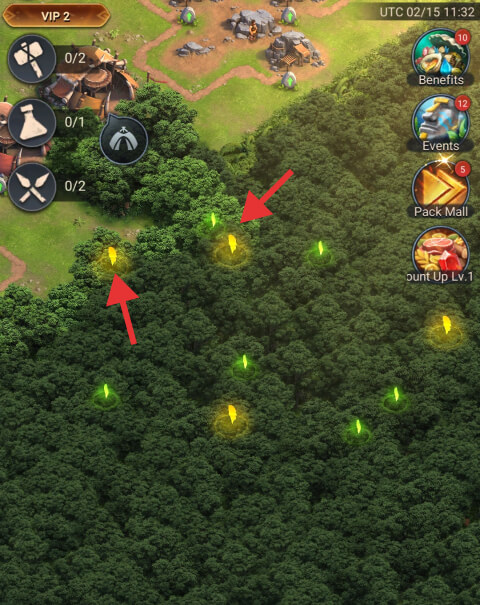
The more you progress in the game, the more you will need to expand your village by unlocking new areas. Each newly unlocked area is covered by trees that need to be chopped and will contain several highlighted points.
These points should be your priority for clearing. All you need to do is to hold a bit at each point and Meyer will clear the area for you. The yellow points, in general, hide new structures or Barbarian camps that you must defeat.
Constructing and upgrading buildings
As a new player, your priority should be to construct and upgrade to the highest level possible resource structures such as Farms, Purifying Pools, Logging Sheds, Stoneworks, Hunter Shelters, Charcoal Kilns, and Gold Mines. Additionally, you will also need to create several storages for each of these structures, to be able to store more resources.
Understanding the VIP System
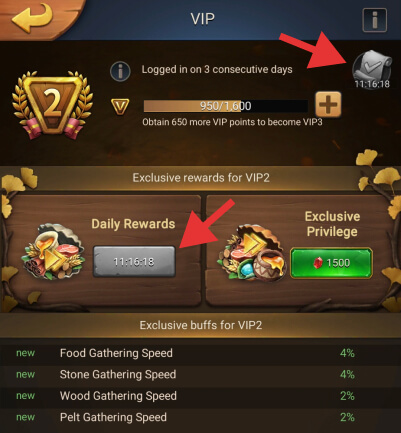
VIP is a special system that provides great rewards that you can collect daily and additional efficient buffs that will be permanently activated. The benefits of the VIP System depend entirely on your VIP level because the higher the level you are, the more rewards and buffs you get.
To increase your VIP level, you need VIP points. You can accumulate these points by completing tasks, events, and missions, as well as buying premium VIP packs from the Store or using Rubies. The levels range from 1 to 15, with level 15 offering the highest productivity and military buffs.
Researching Techs
The overall progress of your village will depend a lot on the techs you are researching. On the Research page, you have multiple categories but all of them focus on two main areas: enhancing the productivity of your resource structures and improving the combat capabilities of your troops.
As a beginner to Primitive Era: 10000 BC, you should be mostly focusing on two Tech trees: Village Development and Elite’s Queue. Village Development improves resource gathering speed, production, and capacity, while Elite’s Queue improves your main March Queue’s gathering efficiency, defense, attack, and other Military stats.
Using Speedups
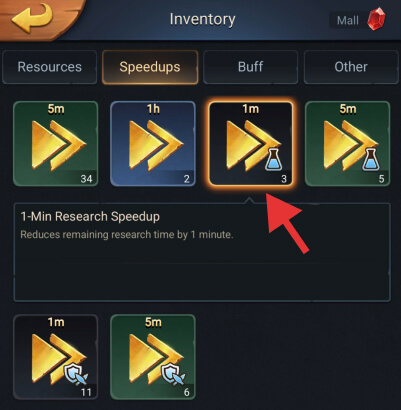
Speedups are items that can help you decrease or instantly complete the time it takes to construct buildings, research technology, and train troops. They can be obtained by completing missions and events, defeating creatures and Barbarians, and buying premium packs.
Speedups are divided into 4 categories: Building Speedups, Research Speedups, Troop Training Speedups, and General Speedups which can be used for all 3 purposes.
Recruiting Heroes

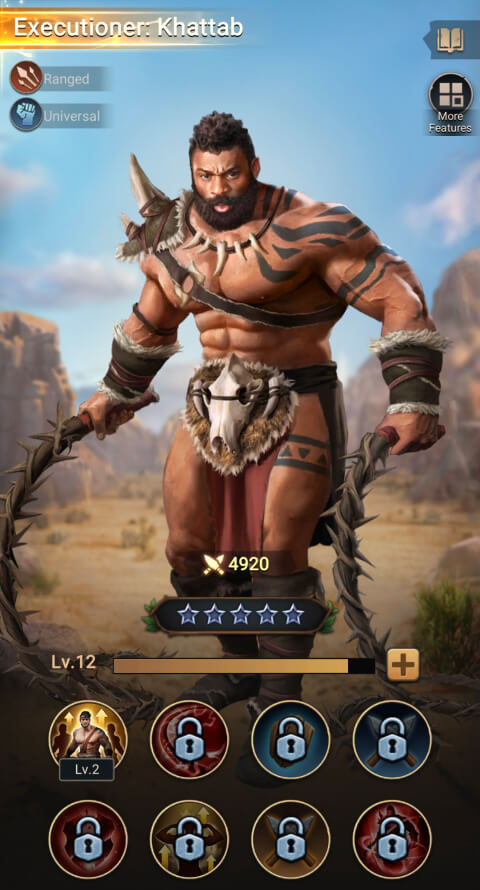
In Primitive Era: 10000 BC, you can recruit and upgrade heroes to fight in battles alongside your troops. They are divided into 2 types, Combat Heroes and Growth Heroes. Combat heroes are used to leading troops during battles while Growth heroes are dedicated to improving the productivity of your village. There are also 4 rarities here, Ace, Stellar, Epic, and Legendary.
Legendary heroes are the most powerful because they have the highest stats and offer more advanced skills, but they are also the most difficult to get due to their low drop rate. You can get heroes by using Recruitment Scrolls in the Heroes Lodge, or by collecting 150 Frags of the same hero.
Training Warriors (Troops)
There are 3 types of troops (also called warriors in the game) in Primitive Era: 10000 BC, Infantry, Cavalry, and Archers. Each type has its own unique stats, skills, and cost.
Your Warrior can also be promoted to higher tiers by upgrading their corresponding building and researching related techs. Warriors can be trained at Infantry Barracks, Archery Range, and Cavalry Camp.
Creating your first March Queue
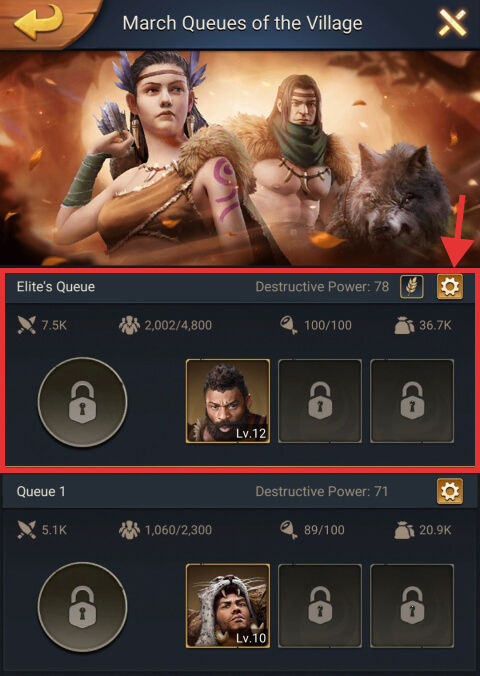
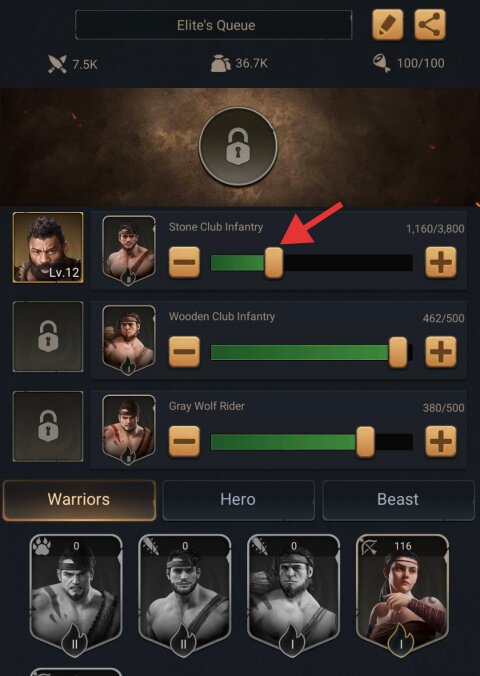
To be able to start gathering and defending your village, you need to learn how to create march queues. A march queue is basically your legion to which you can add warriors (Infantry, Cavalry, and Archers), heroes, but also beasts.
In the beginning, unfortunately, your options are very limited because you only have one march with only one hero slot unlocked. But as you progress and research more Military-related techs, you will unlock more slots and be able to add up to 3 heroes per march queue.
To create your first March queue you need to recruit at least one hero and train some units. After that you can access the March Queues list by tapping the spears icon visible on the left side of your screen (below the research icon).
Next, on the March Queue you want to customize, tap its litle cogwheel icon. This will take you to a page ehere you can drag troops, heroes and bests (require Chief’s Hall level 16) in it. When you’re ready, tap the back button on the top-left corner and the formation will be automatically saved.
The chosen units should be based on the hero’s ability because some heroes are more specialized at leading a specific type of unit such as Infantry, Cavalry, or Archers. There are also some heroes such as the Executioner: Khattab that have the Univeral ability and can lead all types of units/warriors.
Engaging in PvP activities
Primitive Era: 10000 BC is a game that encourages PvP activities, such as attacking other players, joining a Clan, and participating in Clan Wars. You can attack other players but before doing so, you should consider the level and strength of your target.
To learn more about your target, you should always scout first. This way you can gain additional intel before making a decision.
You should also be aware that most servers have a NAP agreement between the top 10 ranking Clans. Therefore, you should check if the Clan of your target is part of the NAP before attacking. Otherwise, you may cause a Clan war.
Using Village Buffs
These buffs can be activated for a short period and improve the stats of your village, such as gathering, build speed, research speed, attacking, the amount of Hero EXP that can be obtained from defeating creatures, and many others. The majority of them can be purchased with Rubies, but some can be obtained only by purchasing premium packs, which are also the most effective (sad, I know).
To use or purchase village buffs, first tap the globe button to exit your village. Next wile viewing the village, tap it and press “Village Buffs”. From there you can pick any buff you want to use. If you don’t have any, it will show you the Ruby price and the option to buy some.
Even though Primitive Era: 10000 BC is filled with many premium offers, you can still enjoy it without spending a dime. I hope that this beginner’s guide helped you get started with the basics and that you’re ready to start your journey in this amazing strategy game! Good luck!
